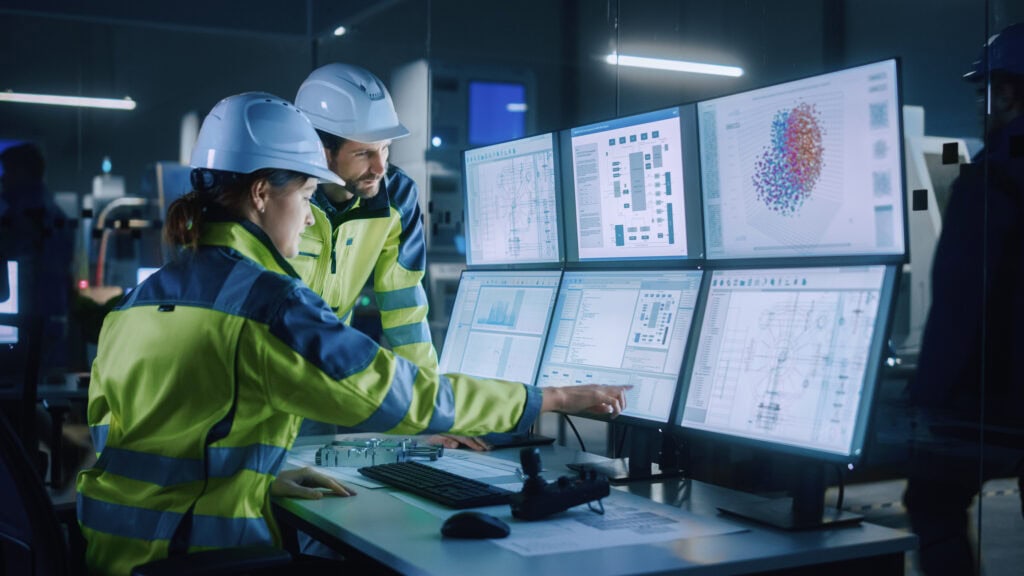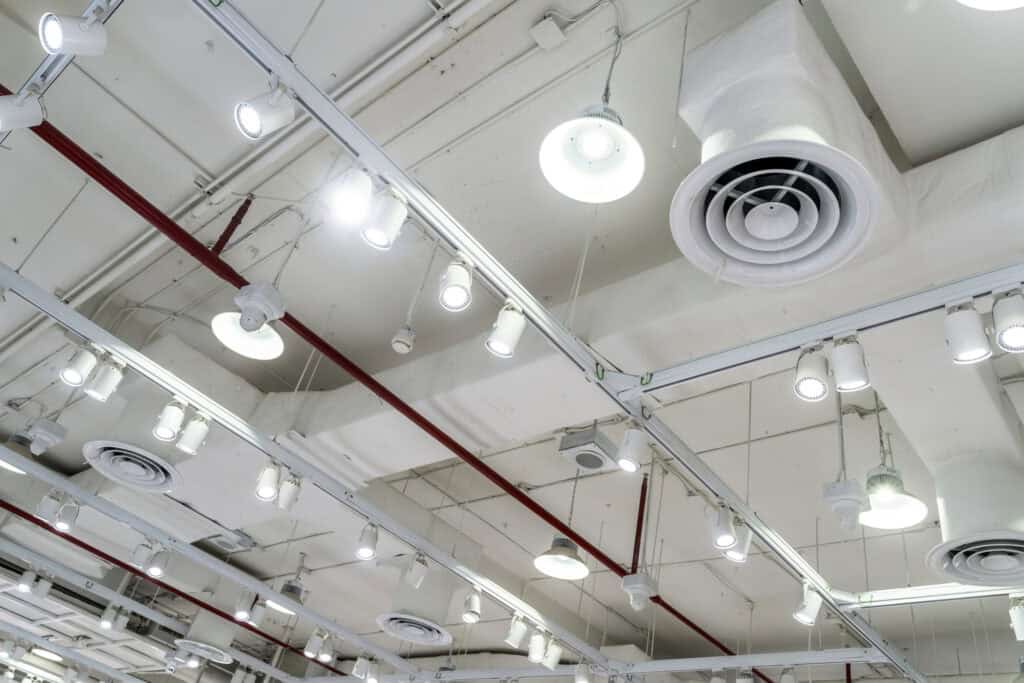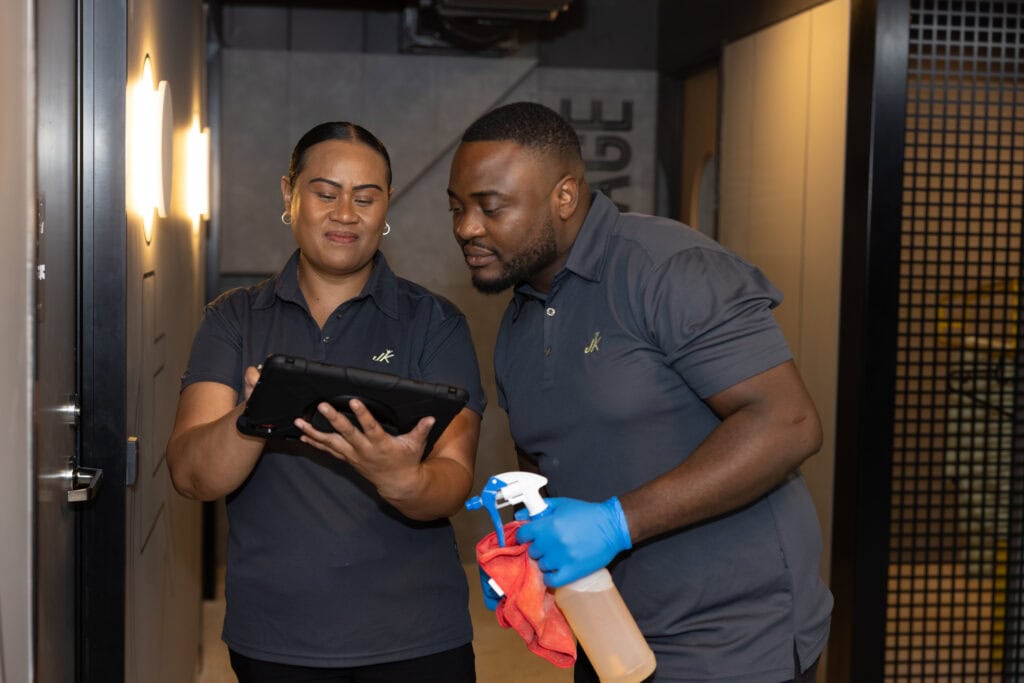Table of Contents
ToggleA Smart Shift in Facilities Management
Facilities managers are facing a new era, one driven by real-time data, predictive intelligence, and automation. With rising energy costs, ageing infrastructure, and increasing compliance requirements, the need for smarter, more connected solutions has never been greater.
Enter IoT in Facilities Management.
The Internet of Things (IoT) is no longer a futuristic concept. It’s a practical, powerful tool that’s reshaping how commercial buildings are managed across Australia. From predictive maintenance to smart lighting and air quality monitoring, IoT is changing the game for facilities managers striving for efficiency, sustainability, and cost control.
What is IoT in Facilities Management?
At its core, IoT refers to a network of physical devices embedded with sensors, software, and connectivity tools that collect and exchange data. In facilities management, this means integrating IoT into lighting, HVAC, plumbing, security, and other systems to allow real-time tracking, automation, and predictive decision-making.
These connected devices feed data to cloud-based platforms or Building Management Systems (BMS), empowering facilities teams to make smarter, data-backed decisions.

12 Ways IoT is Transforming Australian Facilities
Here’s how IoT is driving real impact across commercial facilities in Australia:
1. Smart Energy Monitoring
IoT sensors give you live insights into energy consumption across lighting, equipment, and HVAC. That means you can identify energy-hungry systems and take action before the bills pile up. It’s a fast-track to better NABERS ratings and cost savings.
Fast Fact
Australia’s commercial sector could save up to $1.5 billion every year just by improving energy efficiency through smarter monitoring and controls. (Source: ClimateWorks Australia)
2. Predictive Maintenance
With IoT sensors tracking performance in real-time, maintenance teams can fix small problems before they become major breakdowns. No more surprise equipment failures or costly emergency callouts.
Did You Know?
Predictive maintenance can cut unplanned downtime by up to 70% and extend asset life by as much as 40%. (Source: Deloitte)
3. Automated HVAC and Climate Control
IoT-enabled HVAC systems respond to occupancy, weather, and preset comfort settings, keeping people happy while cutting down on overuse and wastage.
Fast Fact
Heating and cooling make up nearly 50% of a commercial building’s energy use in Australia. Automating HVAC is one of the quickest ways to cut costs. (Source: energy.gov.au)
4. Real-Time Occupancy and Space Optimisation
Sensors track how often different areas are used. This helps managers reallocate underused spaces, reduce unnecessary cleaning, and plan future fit-outs more effectively.
Did You Know?
Some Aussie companies have reduced their office footprint by 30% by using occupancy data to consolidate space and lower overheads. (Source: CBRE Workplace Trends)
5. Intelligent Lighting Systems
Smart lighting systems adjust to natural daylight and motion, only turning on when needed. They also let you control lighting remotely or schedule it around business hours.
Fast Fact
Upgrading to smart LED lighting can cut lighting energy use by up to 80% and the bulbs last years longer than traditional ones. (Source: Energy Efficiency Council)

6. Remote Asset Management
Whether you’re managing a retail store in Sydney or a warehouse in Perth, IoT platforms let you check in on assets without having to be on-site.
Did You Know?
Facilities teams can reduce site visits by over 60% by using IoT for remote diagnostics and monitoring. (Source: McKinsey & Co.)
7. Enhanced Security and Access Control
IoT-powered locks, surveillance, and access systems allow you to track who’s entering and exiting a building in real time. That means better control, stronger compliance, and faster incident response.
Fast Fact
Smart access systems can help you stay compliant with Australia’s Privacy Act by logging entry data automatically and securely.
8. Water Leak Detection and Smart Metering
Water sensors detect leaks the moment they start, helping prevent water damage and wasted usage. Smart meters also help track trends and identify hidden inefficiencies.
Did You Know?
A single leaking tap can waste more than 10,000 litres of water a year. IoT sensors catch leaks early and keep your water bills under control. (Source: Sydney Water)
9. Indoor Air Quality (IAQ) Monitoring
IoT sensors track CO₂ levels, humidity, temperature, and airborne pollutants to improve indoor environments, boosting comfort, health, and WHS compliance.
Fast Fact
Poor air quality can reduce workplace productivity by up to 10%. Monitoring IAQ helps keep your team healthy and focused. (Source: Harvard T.H. Chan School of Public Health)
10. Smart Waste Management
Bin sensors track fill levels and alert you when it’s time for collection. That means no more overflowing bins, or empty ones being collected unnecessarily.
Did You Know?
Smarter waste management can cut collection costs by 20–40% while also reducing landfill waste. (Source: Cleanaway)
11. Asset Tracking
Lost or misplaced equipment is a thing of the past with Bluetooth, RFID, or GPS tags. Know where every asset is across multiple sites, in real time.
Fast Fact
Facilities teams can spend up to 30% of their day just looking for tools or equipment. Asset tracking puts that time back in your pocket. (Source: Zebra Technologies)
12. Smart Cleaning Schedules
IoT-enabled occupancy sensors let you know exactly which areas have been used so you can prioritise cleaning where it’s actually needed. This boosts hygiene standards while cutting unnecessary labour costs, especially in large facilities.
Did You Know?
Facilities using data-driven cleaning strategies have reported cost savings of 15–25% while improving cleanliness and compliance. (Source: Facility Executive)

Why IoT Matters for Facilities Managers in Australia
Australian businesses are increasingly looking to improve operational efficiency while cutting costs and staying compliant with evolving standards.
Facilities managers need to manage:
- Compliance with WHS, environmental and fire safety standards
- Rising operational costs
- Employee comfort and productivity
- Asset reliability
- Multi-location complexity
IoT directly addresses all of these by offering:
- Real-time data for better decision-making
- Automated alerts and preventative actions
- Integrated platforms to manage diverse building systems
- Cost savings through predictive, not reactive, maintenance
The Compliance and Sustainability Edge
IoT is more than just a handy tool, it also helps facilities stay compliant and support broader environmental and social goals:
- WHS Compliance: Monitor air quality, temperature, lighting, and noise levels to meet safety standards.
- ISO 14001 & NABERS: IoT data can directly feed into reporting and help improve environmental ratings.
- Maintenance Logs: Sensors automatically track performance, aiding in compliance documentation for audits.
Did You Know?
Commercial buildings in Australia account for around 10% of total greenhouse gas emissions—much of which comes from inefficient lighting and HVAC systems. (Source: NABERS)
Smart tech isn’t just smarter, it’s greener, too.
Barriers to Adoption (and How to Overcome Them)
While IoT offers clear benefits, adoption in facilities management does come with challenges:
- Upfront investment: Though costs have dropped in recent years, initial setup can still be a barrier. Start small - target key assets or areas to pilot.
- Cybersecurity concerns: Work with reputable providers that offer end-to-end encryption and compliance with Australian data security standards.
- Skills and training: Partner with providers like JKFM who offer not only the tech but the knowledge and ongoing support to implement it effectively.
Looking Ahead: The Future of Facilities is Connected
IoT in Facilities Management is no longer just a trend, it’s the new standard. As more Australian companies shift towards smart buildings and sustainable operations, IoT becomes essential to staying competitive, compliant, and efficient.
At JKFM, we help you make sense of the data, implement the right technologies, and manage your facility with confidence, whether you operate a single site or dozens across Australia.






